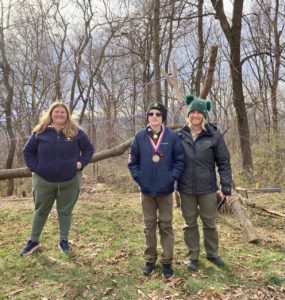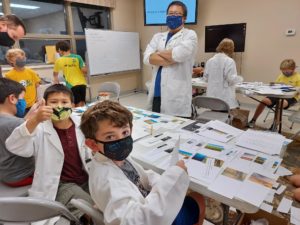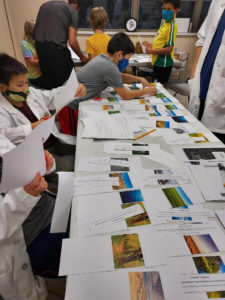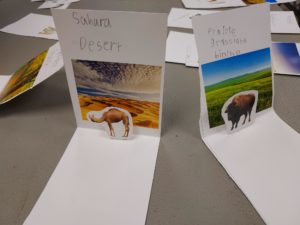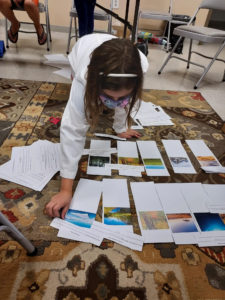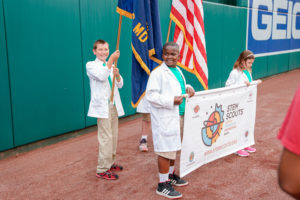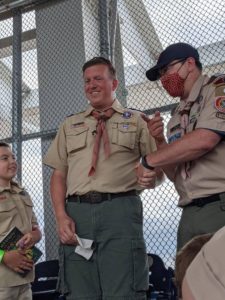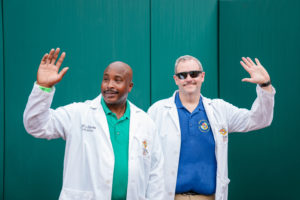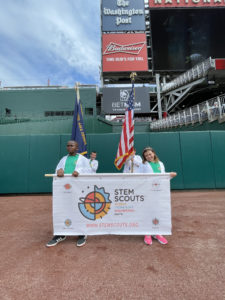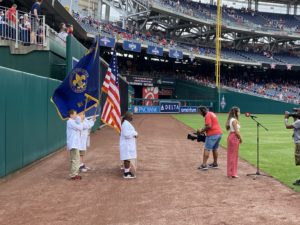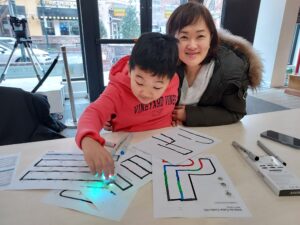 Color-Coding Robotics in Elementary STEM Scouts
Color-Coding Robotics in Elementary STEM Scouts
Specific steps. Patience. Innovation. Thanks to coding, we are able to live our lives in a more convenient and revolutionized way! Throughout this module, Scouts use color-coding robots in a variety of ways to boost their familiarity with robotics, coding, problem-solving, and design-thinking. Starting with color codes, Scouts become comfortable with the idea of inputs and outputs and will then move on to block-coding with an online programming language.
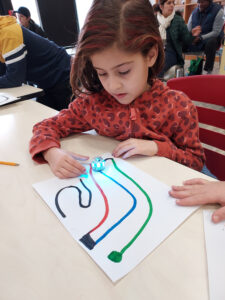
STEM Scouts also focus on integrating art into STEM by creating various designs while
also learning about real-world concepts like data collection, Venn diagrams, and blueprints. Those who code hold the world’s technological future in their hands, and the opportunities are unlimited!
Soft Robotics in Middle School
The middle schoolers’ STEM Scouts robotics module delves into an exciting and newly developing branch of robotics—soft or flexible robotic structures. When you look at an elephant’s trunk or an octopus’s arm, you can see natural examples of flexible structures used to grasp and manipulate objects. There are many tasks in our world that a rigid structure just does not perform well. Soft Robotics explores the development of flexible structures to work in these areas. In this module, Scouts will explore the concept of soft robots and learn how flexible structures move and how they can be programmed to perform useful tasks. This module was developed by the REACH Lab at the University of Tennessee, Knoxville.
High School Robotics in a STEM Exploring Post
Botball Educational Robotics requires the students to build, program, test and document two robots to autonomously complete scoring challenges. The robots are built out of kits provided by KISS Institute for Practical Robotics (KIPR). Photographed below are members of Explorer Post 1010 working with the PVC pipe as they prepare for a Botball competition.
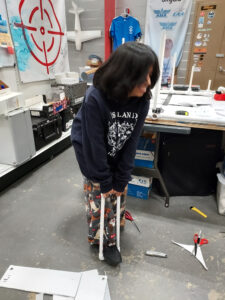
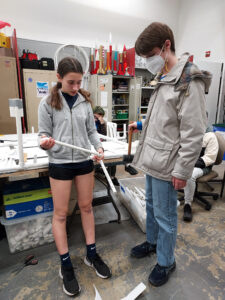
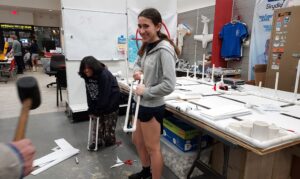

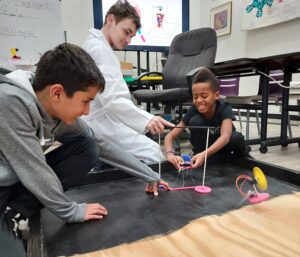 One of our recently developed STEM Scouts modules takes elementary schoolers on the journey of innovation. During their first meeting, scouts were handed individual kits and given basic instructions to assemble a simple yet entertaining wiggle bot. Wiggle bots are simple bots, that use a nonconcentric weight to generate some movement. As soon as the bots power on, typically they move in abysmal patterns, causing much amusement and giggles. The came the challenge: scouts were tasked to control their bots and make them “move in a straight line.”
One of our recently developed STEM Scouts modules takes elementary schoolers on the journey of innovation. During their first meeting, scouts were handed individual kits and given basic instructions to assemble a simple yet entertaining wiggle bot. Wiggle bots are simple bots, that use a nonconcentric weight to generate some movement. As soon as the bots power on, typically they move in abysmal patterns, causing much amusement and giggles. The came the challenge: scouts were tasked to control their bots and make them “move in a straight line.”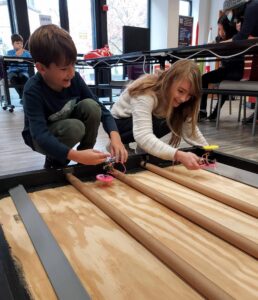
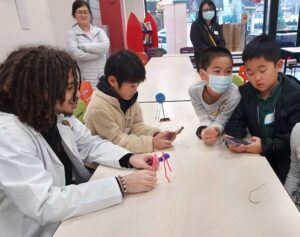
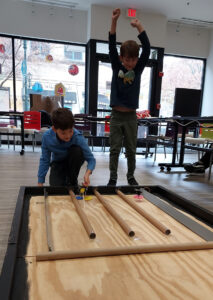 This seemingly lighthearted challenge became a serious exercise in stamina and iteration for the scouts, immersing them in the hands-on intricacies of the engineering design process—a skill closely intertwined with the art of inventing.
This seemingly lighthearted challenge became a serious exercise in stamina and iteration for the scouts, immersing them in the hands-on intricacies of the engineering design process—a skill closely intertwined with the art of inventing.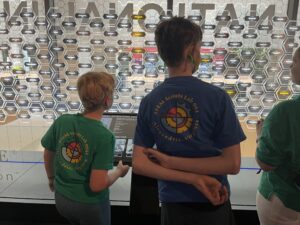
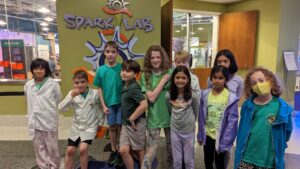 The
The 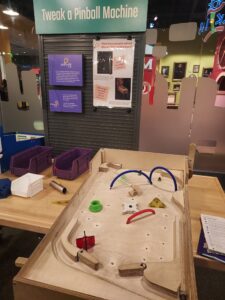
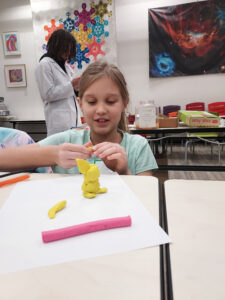
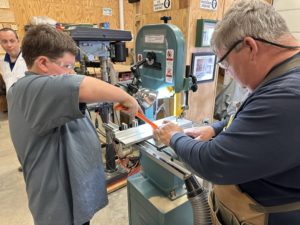 Have you ever heard of BlastCars?
Have you ever heard of BlastCars?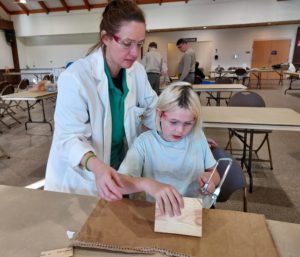
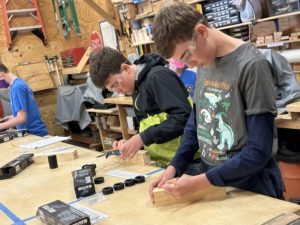
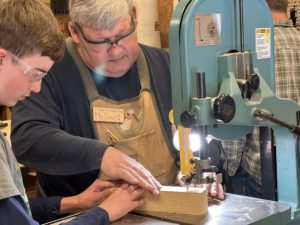 After 1000+ Pinewood Derby cars, Michael’s Woodshop has perfected a build process. The Blastcar build was only slightly different. Scouts had to ensure that designs do not intersect with the drilled holes for the Co2 cartridges. Additionally, while PWD cars’ starting gates release at the front of each car, Blastcars are lined up against the rear (where the cartridges are!)
After 1000+ Pinewood Derby cars, Michael’s Woodshop has perfected a build process. The Blastcar build was only slightly different. Scouts had to ensure that designs do not intersect with the drilled holes for the Co2 cartridges. Additionally, while PWD cars’ starting gates release at the front of each car, Blastcars are lined up against the rear (where the cartridges are!)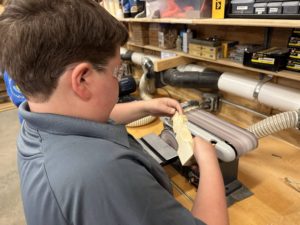 The Woodshop machinery as well as Mr. Dave’s expertise made for an incredible experience. Sure, scouts could design blast cars with hand tools. In fact, 2 weeks before the scouts’ woodshop visit, they practiced using hand tools. This juxtaposition led to a greater appreciation of the Woodshop opportunity, and the professional cars they got to design!
The Woodshop machinery as well as Mr. Dave’s expertise made for an incredible experience. Sure, scouts could design blast cars with hand tools. In fact, 2 weeks before the scouts’ woodshop visit, they practiced using hand tools. This juxtaposition led to a greater appreciation of the Woodshop opportunity, and the professional cars they got to design!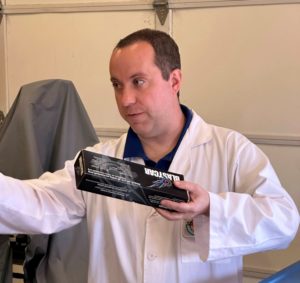
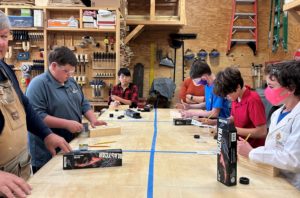
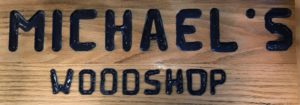 For more information about the merit badge classes, shop capabilities, upcoming events or reserving the shop, please visit the Michael’s Woodshop webpage. If you have questions or would like additional information, please email us at
For more information about the merit badge classes, shop capabilities, upcoming events or reserving the shop, please visit the Michael’s Woodshop webpage. If you have questions or would like additional information, please email us at 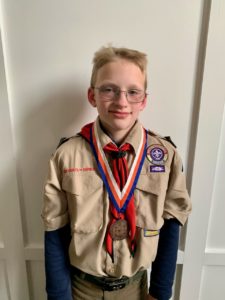 As Pack 278 enters its 70th year as a chartered BSA Pack serving boys and girls in the FSK District, leaders are excited to award it’s first Dr. Charles H. Townes Supernova to an Arrow of Light Scout, Finn H. The Dr. Charles H. Townes Supernova honors Dr. Townes’ many achievements. While working on the Townes Supernova, Finn was given the challenge to research 5 different scientists and engineers. Finn chose to research Ralph Baer, Jane Goodall, Katherine Johnson and Alan Turing. He found they had similarities to Townes and his ability to believe in himself despite others telling him his ideas would never work. The fifth innovator Finn researched was Walt Disney. Walt Disney believed that if you could dream it then it was possible. Throughout his life, Disney pushed the boundaries of what was possible by inventing a multi-plane camera to create the first full-length animated motion picture, Snow White. Walt Disney inspired his Imagineers to combine their imagination with technology to create incredibly life-like animatronics and innovative theme park rides. Like Disney, Supernova Mentors strive to inspire youth to believe in themselves and push the boundaries.
As Pack 278 enters its 70th year as a chartered BSA Pack serving boys and girls in the FSK District, leaders are excited to award it’s first Dr. Charles H. Townes Supernova to an Arrow of Light Scout, Finn H. The Dr. Charles H. Townes Supernova honors Dr. Townes’ many achievements. While working on the Townes Supernova, Finn was given the challenge to research 5 different scientists and engineers. Finn chose to research Ralph Baer, Jane Goodall, Katherine Johnson and Alan Turing. He found they had similarities to Townes and his ability to believe in himself despite others telling him his ideas would never work. The fifth innovator Finn researched was Walt Disney. Walt Disney believed that if you could dream it then it was possible. Throughout his life, Disney pushed the boundaries of what was possible by inventing a multi-plane camera to create the first full-length animated motion picture, Snow White. Walt Disney inspired his Imagineers to combine their imagination with technology to create incredibly life-like animatronics and innovative theme park rides. Like Disney, Supernova Mentors strive to inspire youth to believe in themselves and push the boundaries.